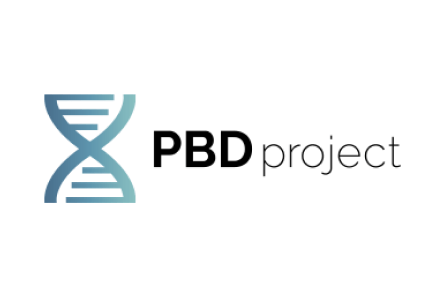PBD Project
Cycle 3
Peroxisomes are cell organelles necessary for cell funtion and brain development. A dysfunction in peroxisomes might result in sensorineural hearing loss, pigmentary retinal degeneration, multiple organ dysfunction, and psychomotor impairment. Peroxisome biogenesis disorders Zellweger Spectrum (PBD-ZSD) are rare, complex, autosomal disorders affecting the function and formation of peroxisomes.
Last updated 04/30/2025
Clinical
Disease Class
Inherited metabolic disorder
Body Systems
Metabolic
Muscular / Skeletal
Nervous / Sensory
Renal / Urinary / Excretory
Respiratory
Organs
Bones
Brain
Ears
Eyes
Heart
Liver
Lungs
Mouth / teeth
Muscles
Stomach
Known Genetic Link
Yes, one or more genes directly cause the condition
causative_genes
PEX1
PEX10
PEX11
PEX12
PEX13
PEX14
PEX2
PEX3
PEX5
PEX6
contributory_genes
None specified / unknown
Type of Inheritance
Autosomal recessive
Newborn Screening
Yes, in some states
Disease Mechanism(s)
Immune deficiencies
Inherited metabolic disorder
Lipid metabolism disorder
Myelination defect
Pathogenic mutation
Protein misfolding
Transport defect
Age of Onset
Adolescence (12-17)
Adulthood (age 18-64)
Early childhood (age 1+-5)
Infancy (age 0-1)
Middle childhood (6-11)
Prebirth
Average Age at Diagnosis
Early childhood (age 1+-5)
Infancy (age 0-1)
Life Expectancy
Adolescence (12-17)
Adulthood (age 18-64)
Early childhood (age 1+-5)
Elderly (age 65+)
Infancy (age 0-1)
Middle childhood (6-11)
Pre-Birth
Affected Sex(es)
Female
Male
National Prevalence
11-50
Global Prevalence
101-1000
National Incidence
Less than 10
Global Incidence
Less than 10
Populations and/or ancestry with higher prevalence
There are some locations with higher than average prevalence/incidence rates due to local founder effects. These include PEX1 in Northern Europeans, PEX6 in French Canadians, PEX10 in Japanese, and PEX12 in Persian Jewish communities.
Symptoms / Phenotypes
abnormal hair morphology
abnormal skeletal morphology
abnormal skin morphology
developmental delay
hearing loss / hearing impairment
intellectual disability
liver disease
movement disorders / ataxia / tremor
vision problems
Biomarkers
Diagnostic
Monitoring
Existing Therapies
Complementary and Alternative treatments
FDA-Approved for Symptom Relief
Organizational & Research
Cell Lines
Fibroblasts
iPSCs
Cell Lines, Institution
Not specified
Cell Lines, Involvement
Consulted
Designed
Funded
Own
Cell Lines, share
All our cell lines are freely available
Disease Model
C. elegans
Drosophila/fly
Mouse
Organoids
Yeast
Zebrafish
Disease Model, Involvement
Consulted
Designed
Funded
Own
Disease Model, share
Some of our disease models are freely available
Clinical Trial Role
Not involved
Biobank, Institution
Azenta Life Sciences
Biobank, Involvement
Consulted
Designed
Funded
Own
Center of Excellence, Institution
None
Registry
Yes, we have collaborated on a registry
Data Collected, Registry
Clinical data
Electronic health records/electronic medical records
Genetic data
Imaging data
Longitudinal natural history data
Medication usage
Patient contact info
Patient-reported data
Data Entered by, Registry
Both
Platform, Registry
Not specified
Natural History Study
Yes, we have collaborated on a natural history study
Data Collected, Natural History Study
Electronic health records/electronic medical records
Genetic data
Imaging data
Medication usage
Patient-reported outcomes
Platform, Natural History Study
Not specified
FDA Patient Listening Session
No
FDA Patient-Focused Drug Development (PFDD) Program
Yes
ICD Codes
We use an ICD-10 code capturing the family of diseases to which our disease belongs
We use an ICD-11 code capturing the family of diseases to which our disease belongs
Diagnostic Guidelines
No
Science Advisory Board Policies
No policies
Research Network Policies
Has CRN but no policies
Research Roadmap
Yes we have a Research Roadmap, and will share policies
International Chapters
None
International Partners
Europe
